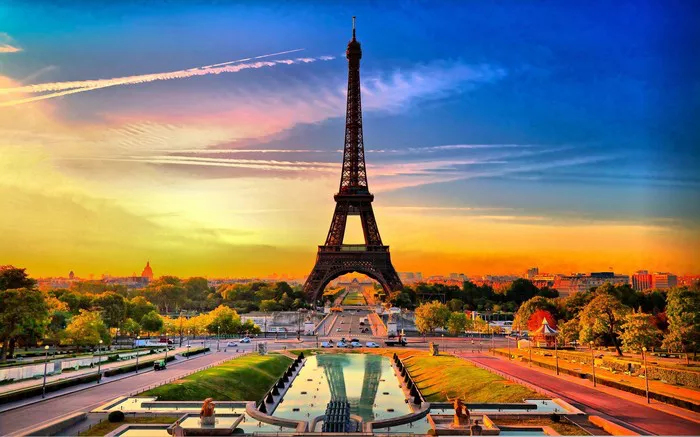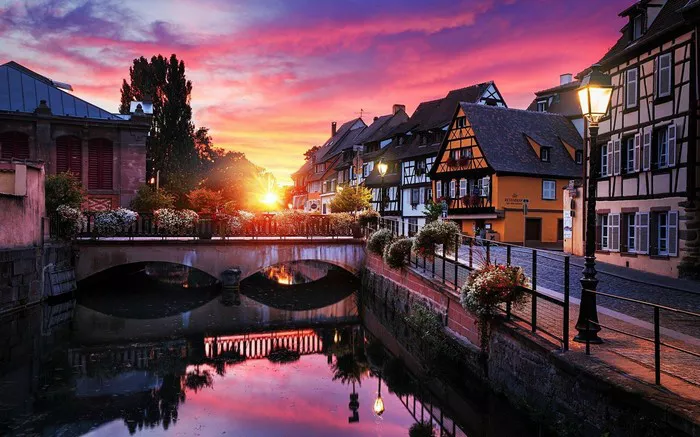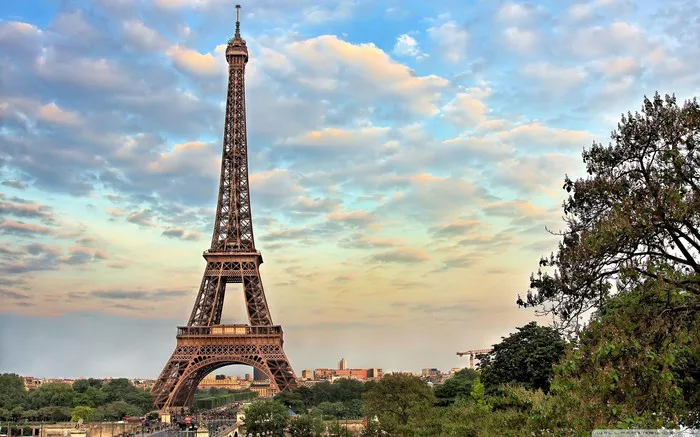| Country: | Italy |
| Language: | Italian |
| Population: | Approximately 260,000 (city proper), with a metropolitan area exceeding 2.6 million. |
| Area: | 414.6 km² (160.8 sq miles). |
| Time Zone: | Central European Time (CET) / Central European Summer Time (CEST) during DST. |
| Currency: | Euro (€) |
| Climate: | Humid subtropical climate (hot, humid summers; mild, damp winters). |
| Tourist Attractions: | Highlights include the Grand Canal, St. Mark’s Basilica, Doge’s Palace, Rialto Bridge, and the historic Jewish Ghetto. |
| Transportation: | Vaporettos (water buses), water taxis, gondolas, walking, and limited vehicular traffic on the mainland. |
| Famous Events: | Venice Carnival, Venice International Film Festival, and the Regata Storica (Historical Regatta). |
| Cultural Influence: | Renowned for its unique canal-based architecture, rich history as a former maritime republic, and significant contributions to art, music, and commerce. |
Best Places To Visit Venice
Venice, often dubbed “La Serenissima,” is a city of unparalleled beauty and rich history, where every canal and alleyway tells a story. Here are ten must-visit attractions that encapsulate the essence of this floating city:
St. Mark’s Basilica – An architectural masterpiece adorned with shimmering mosaics and intricate designs, St. Mark’s Basilica stands as a testament to Venice’s Byzantine influences. Its grandeur and historical significance make it a focal point for visitors.
Doge’s Palace – Once the political heart of Venice, the Doge’s Palace showcases Gothic architecture and houses grand chambers filled with Renaissance art. Visitors can traverse the famous Bridge of Sighs, connecting the palace to the historic prison.
Grand Canal – The main waterway of Venice, the Grand Canal is lined with stunning palazzos and bustling with gondolas and vaporettos, offering a unique perspective of the city’s vibrant life.
Rialto Bridge – As the oldest bridge spanning the Grand Canal, the Rialto Bridge is an iconic symbol of Venice, offering picturesque views and housing a variety of shops along its span.
Piazza San Marco – Known as “the drawing room of Europe,” this expansive square is surrounded by historic buildings, cafes, and landmarks, serving as the social and political center of Venice.
Teatro La Fenice – One of Italy’s most renowned opera houses, La Fenice has risen from the ashes multiple times, symbolizing Venice’s resilience and passion for the arts.
Peggy Guggenheim Collection – Housed in the Palazzo Venier dei Leoni, this museum showcases an impressive collection of modern art, reflecting Venice’s embrace of contemporary culture.
Murano and Burano Islands – Famous for glass-making and vibrant lacework, respectively, these islands offer a colorful escape from the main city, showcasing traditional Venetian crafts.
Gallerie dell’Accademia – This museum houses a rich collection of Venetian paintings, offering insights into the city’s artistic heritage and evolution.
San Giorgio Maggiore – Located on its own island, this basilica offers stunning views of Venice from its bell tower and is a masterpiece of Renaissance architecture.
Best Time To Visit Venice
Spring (March to May):
Weather: Mild and pleasant, with temperatures ranging from 10°C to 20°C (50°F to 68°F).
Pros: Spring is one of the best times to visit Venice. The city starts to bloom, the weather is comfortable, and the crowds are relatively smaller compared to the summer months. April and May offer ideal conditions for sightseeing and enjoying outdoor cafes along the canals.
Cons: April and May can see occasional rainfall, but it’s usually not too disruptive.
Summer (June to August):
Weather: Hot and humid, with temperatures often reaching 25°C to 30°C (77°F to 86°F).
Pros: Summer is peak tourist season, meaning Venice is buzzing with activity, and there are numerous festivals, such as the Venice Film Festival and Redentore Festival in July. Longer days and warm evenings make it great for sightseeing.
Cons: Venice can get extremely crowded, especially in July and August. Accommodation prices are higher, and the city can feel cramped with tourists. Also, the humidity can make the heat uncomfortable.
Autumn (September to November):
Weather: Temperatures are still mild in September (15°C to 25°C/59°F to 77°F), but by November, it starts to get cooler (around 10°C/50°F).
Pros: Early autumn is an excellent time to visit because the weather is still warm, but the crowds have thinned out. September and October offer fewer tourists and more affordable accommodation than in the summer months. The Venice Film Festival in early September is a big draw for film lovers.
Cons: By November, the weather can get chilly and rainy, and the famous acqua alta (high tide) may begin, causing flooding in parts of the city.
Winter (December to February):
Weather: Cold, with temperatures ranging from 0°C to 10°C (32°F to 50°F).
Pros: Winter is the least crowded time, so you’ll have Venice almost to yourself. It’s an excellent time for those who prefer a more tranquil visit. Plus, Venice looks stunning under a layer of snow, and the holiday season brings festive decorations and a magical atmosphere, especially around Christmas and New Year’s.
Cons: It’s cold and there may be rain or fog. Some attractions may close for maintenance during the off-season. Also, there’s a higher chance of experiencing acqua alta flooding, especially in November and December.
Tips For Venice Travel
Traveling to Venice is like stepping into a beautiful postcard. Here are some tips to help you make the most of your trip:
1. Plan in Advance
Accommodation: Book your hotel or Airbnb early, especially in popular areas like San Marco or Cannaregio. Venice can get busy, particularly during peak tourist seasons.
Tickets for Attractions: Popular sites like St. Mark’s Basilica, the Doge’s Palace, and the Rialto Bridge often have long lines, so it’s smart to book tickets ahead.
2. Learn Basic Italian Phrases
Although many Venetians speak English, knowing a few Italian phrases is always appreciated. Simple greetings like “Ciao” (Hello) and “Grazie” (Thank you) can go a long way.
3. Use Public Transport
Venice doesn’t have cars, but it has an excellent vaporetto (water bus) system. Consider getting a Venice Transport Pass for unlimited travel on the vaporettos and buses around the city and islands.
4. Avoid Tourist Traps
Skip the overpriced restaurants near major tourist areas like St. Mark’s Square. Instead, explore the quieter neighborhoods like Cannaregio or Dorsoduro for authentic Venetian dining experiences.
5. Take Advantage of Free Attractions
Strolling around Venice is a great way to experience its charm for free. Wander along the canals, explore lesser-known squares like Campo Santa Margherita, and visit free churches like the Basilica di Santa Maria della Salute.
6. Dress Comfortably
Venice is a very walkable city, but many of its streets are narrow and cobblestone. Wear comfortable shoes, as you’ll do a lot of walking, and be prepared for possible flooding during high tides (Acqua Alta).
7. Mind Your Belongings
Venice, like other tourist-heavy cities, can have pickpockets. Keep your belongings secure, especially on crowded vaporettos or in areas like the Rialto Market.
8. Explore Beyond the Main Attractions
While St. Mark’s Basilica, the Rialto Bridge, and the Grand Canal are must-sees, explore quieter areas like the island of Burano for its colorful houses or the peaceful garden of Giardini della Biennale.
9. Try the Local Food
Don’t miss Venetian specialties like risotto al nero di seppia (squid ink risotto), cicchetti (small tapas-like dishes), and fresh seafood. Try some tiramisu for dessert, as it was invented in the Veneto region.
10. Avoid Visiting in Peak Summer
Venice is incredibly popular in the summer months, which means it can get crowded. For a more relaxed experience, visit in the spring or fall, when the weather is still pleasant but the crowds are smaller.
11. Watch Out for Long Lines
Popular attractions like the Doge’s Palace and St. Mark’s Basilica can have long lines. Consider visiting early in the morning or booking skip-the-line tickets to save time.
12. Keep a Flexible Itinerary
Venice is best explored at your own pace. While it’s helpful to have an itinerary, leave room for wandering. You may discover hidden gems like charming boutiques, secluded squares, and quiet canals.
13. Take a Gondola Ride
While gondola rides can be pricey, they’re a quintessential Venice experience. For a more affordable option, consider sharing a gondola ride with others or taking a traghetto (ferry gondola) across the Grand Canal.
14. Visit the Islands
Venice is surrounded by beautiful islands like Murano (famous for glassmaking), Burano (known for its colorful houses), and Torcello (with its ancient church and peaceful atmosphere). Each island offers a unique charm.
15. Respect Local Etiquette
Venetians value politeness, so always greet people with “Buongiorno” (Good day) or “Ciao” (Hello). Be respectful when visiting churches or other religious sites, and dress appropriately.




